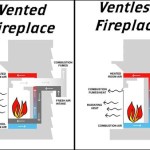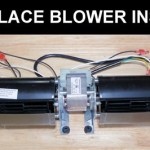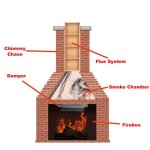Can You Remove a Fireplace Hearth? Considerations and Procedures
The fireplace hearth, a non-combustible floor area extending in front of and potentially around a fireplace opening, serves a crucial function. Its primary purpose is to protect the surrounding floor from sparks, embers, and radiant heat emanating from the fire. Beyond its functional role, the hearth often contributes significantly to the overall aesthetic of a room, complementing the fireplace design and architectural style.
Homeowners contemplating alterations to their living space may consider removing or modifying the fireplace hearth. Motivations for such a decision vary widely, ranging from a desire to update the room's appearance to addressing structural concerns or facilitating a different use for the space. However, removing a fireplace hearth is not a simple undertaking. It necessitates careful planning, an understanding of potential structural and safety implications, and adherence to relevant building codes.
This article aims to explore the feasibility of removing a fireplace hearth, outlining the key considerations, potential challenges, and necessary steps involved in the process. It will delve into safety aspects, structural concerns, and the importance of complying with local regulations, providing a comprehensive overview for individuals considering this type of home renovation project.
Assessing the Feasibility and Necessity of Hearth Removal
Before embarking on the physical removal of a fireplace hearth, a thorough assessment of the project's feasibility and necessity is paramount. This assessment should encompass several key areas, including the hearth's construction, the fireplace's functionality, and the homeowner's underlying motivations.
The hearth's construction materials and method play a significant role in determining the complexity of its removal. Hearths can be constructed from various materials, including brick, stone, concrete, tile, and even wood (though this is less common and often decorative rather than functional). The method of attachment to the surrounding floor and wall structures also varies. Some hearths are built directly onto the subfloor, while others are supported by a separate foundation. Understanding the construction details will dictate the tools and techniques required for removal and the potential impact on surrounding structures.
The functionality of the fireplace itself is another critical factor. If the fireplace is actively used for burning wood or other fuels, the hearth serves a vital safety function. Removing the hearth in such cases can create a significant fire hazard. Even if the fireplace is not currently in use, future use should be considered. If there is any possibility of reactivating the fireplace, removing the hearth is generally inadvisable without implementing alternative fire protection measures.
The homeowner's motivations for removing the hearth must be carefully evaluated against the potential risks and challenges. If the primary motivation is purely aesthetic, alternative solutions, such as resurfacing or refacing the hearth, might be more practical and less disruptive. Similarly, if the hearth is only partially obstructing a desired floor plan, modifying its shape or size may be a more suitable approach than complete removal. A cost-benefit analysis should weigh the desired outcome against the potential expenses, both in terms of labor and materials, as well as the potential impact on property value.
Safety Considerations and Regulatory Compliance
Safety is of paramount importance when dealing with any type of construction or demolition project, and fireplace hearth removal is no exception. Several potential hazards must be addressed to ensure the safety of both the homeowner and any contractors involved.
Dust and debris generated during the removal process can pose a significant health risk. Materials such as brick, concrete, and tile can contain silica, which, when inhaled in crystalline form, can lead to silicosis, a serious and irreversible lung disease. Appropriate respiratory protection, such as a properly fitted N95 or P100 respirator, is essential. Eye protection, such as safety goggles, should also be worn to prevent debris from entering the eyes. Proper ventilation is crucial to minimize dust accumulation within the work area.
Structural integrity is another critical safety concern. The hearth may be integrated into the overall fireplace structure, providing support to the firebox or chimney. Removing the hearth without adequate support can compromise the structural stability of the fireplace, potentially leading to collapse. Before commencing any demolition work, the structural integrity of the fireplace and surrounding structures must be assessed by a qualified professional, such as a structural engineer or experienced mason. If necessary, temporary supports should be installed to prevent any instability.
Electrical and gas lines may also be present in the vicinity of the fireplace and hearth. Care must be taken to avoid damaging these utilities during the removal process. If electrical wiring or gas lines are suspected, a qualified electrician or plumber should be consulted to disconnect and reroute them safely before any demolition work begins. Failure to do so can result in serious injury or property damage.
Compliance with local building codes and regulations is mandatory. Many jurisdictions have specific requirements regarding fireplace construction and alteration, including hearth dimensions, materials, and fire safety standards. Before removing a fireplace hearth, it is essential to obtain the necessary permits and ensure that the proposed modifications comply with all applicable codes. Failure to comply with these regulations can result in fines, delays, and even the requirement to restore the hearth to its original condition.
The Removal Process: Tools, Techniques, and Potential Challenges
The actual removal of a fireplace hearth involves a series of steps, each requiring careful attention to detail and the use of appropriate tools and techniques. The complexity of the process will vary depending on the hearth's construction, size, and method of attachment.
Preparation is key to a successful hearth removal. The work area should be thoroughly protected with drop cloths or plastic sheeting to prevent damage to surrounding floors and walls. Furniture should be removed from the room, and access to the work area should be clear and unobstructed. All necessary tools and equipment should be readily available.
Common tools used for fireplace hearth removal include: sledgehammer, masonry chisel, pry bar, demolition hammer (jackhammer), angle grinder with a diamond blade, vacuum cleaner with a HEPA filter, and various hand tools such as screwdrivers and pliers. The specific tools required will depend on the hearth's construction materials and the method of attachment.
The removal process typically begins with the removal of any facing materials, such as tile or decorative stone. These materials can often be removed using a chisel and hammer. Care should be taken to avoid damaging the underlying structure. Once the facing materials have been removed, the main body of the hearth can be tackled. If the hearth is constructed of brick or concrete, a sledgehammer and chisel can be used to break it into smaller, manageable pieces. A demolition hammer may be necessary for larger or more heavily reinforced hearths. An angle grinder with a diamond blade can be used to cut through stubborn sections or to create clean edges.
As the hearth is removed, it is essential to be mindful of any underlying support structures or connections to the fireplace itself. If the hearth is supported by a separate foundation, that foundation may also need to be removed. If the hearth is directly attached to the fireplace, care must be taken to avoid damaging the fireplace structure. In some cases, professional structural support may be required before proceeding with the removal.
Once the hearth has been completely removed, the remaining debris should be thoroughly cleaned up. A vacuum cleaner with a HEPA filter should be used to remove any dust and debris particles. The subfloor should be inspected for any damage and repaired as necessary. The area is then ready for any subsequent renovations or floor coverings.
Potential challenges during hearth removal include: encountering unexpected structural elements, dealing with asbestos-containing materials (in older homes), and managing dust and debris effectively. If asbestos is suspected, professional testing and remediation is essential before proceeding with any demolition work. If unexpected structural elements are encountered, a qualified professional should be consulted to assess the situation and recommend appropriate solutions.
In conclusion, removing a fireplace hearth is a project that requires careful consideration, planning, and execution. By thoroughly assessing the feasibility and necessity of the project, adhering to safety precautions, and complying with local building codes, homeowners can successfully remove their fireplace hearth and achieve their desired aesthetic or functional goals.

Remove Fireplace Rebuild Install Hearth Ready For Electric Fire

Fireplace Demolition Day The Handyman S Daughter

How To Remove A Builder Grade Fireplace Surround And Mantle

Updating Fireplace Hearth No Demolition Required Single Girl S Diy

How To Remove Quarry Tile Level New Tiles

Fireplace Makeover Removing A Brick Hearth And Retiling

2025 Fireplace Chimney Removal Cost Stack T Demolition

Fireplace Demolition Day

How Much Does Fireplace Removal Cost In 2025 Checkatrade

How To Remove A Fireplace Surround And Mantel Universe
Related Posts








